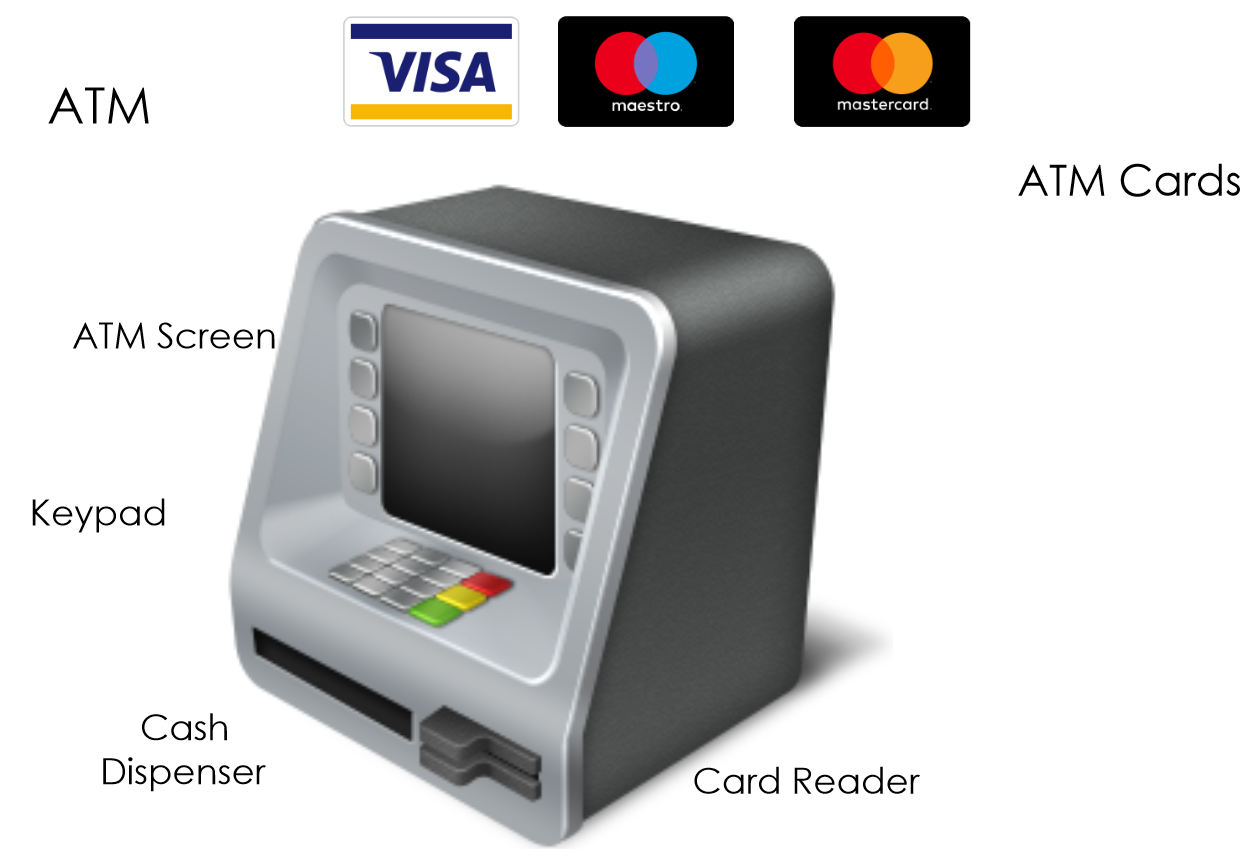Automated Teller Machine (ATM)
Overview
An Automated Teller Machine (ATM) is an electronic device that is capable of dispensing cash(cash withdrawals), handling cash deposits, electronic fund transfers between bank accounts, balance inquiries, and paying bills.

Any customer possessing an ATM card( debit card, credit card, etc) issued by the bank can go to the ATM to perform financial transactions.
Card cards/debit cards
A debit card is a prepaid card with the user account balance as the spending limit.
A credit card is a post-paid card. The credit card holder is empowered to spend wherever and whenever he wants with his credit card within the limits fixed by his bank.
An individual has to open an account with the issuing bank which issues a debit card with a Personal Identification Number (PIN). When he makes a purchase, he enters his PIN to verify his authenticity and make the desired transaction.
When the card is swiped through the electronic terminal, it dials the acquiring bank system – either Master Card or VISA that validates the PIN and finds out from the issuing bank whether to accept or decline the transactions.
Advantages of ATM
The main advantage of the ATM is that it allows the customer to perform a financial transaction without visiting the bank and interacting with a human teller at the bank.
The plastic card replaces cheques, In person attendance of the customer at the bank,
ATMs are 24/7 banking hour restrictions and paper-based verification.
ATM itself can provide information about customers’ accounts and also receive instructions from cardholders.





